Introduction and Editing Judith Torres
Images Dan Matutina, Plus63 Design Co, Pau Tiu, and Bad Student
Pau Tiu had asked Dan Matutina for feedback on their entry to Colorful, not knowing Matutina would be one of their jurors. Matutina was torn: “Am I going to look at the work, knowing I’ll be judging it later on?” But he looked anyway and exclaims he was “shookt!”


“Sobrang ganda nga ng work na sinubmit mo. It was really good,” Matutina tells Tiu two weeks after Colorful’s competition results were announced. “Malakas yung kutob ko—one, I had a strong feeling you would win; two, if you didn’t win, I was sure you would qualify, at the very least, for entry to Young Guns.”
Launched in 2021, Colorful is the latest awards program by The One Club for Creativity, the New York-based organization behind some of the most coveted accolades in the global creative, graphic design, and advertising industries: The One Show, ADC Annual Awards, TDC Awards, Creative Hall of Fame, One Screen, Next Creative Leaders, and Young Guns, a portfolio-based competition for creatives aged 30 and under, which Matutina won in 2013.
Matutina’s hunch was right. Pau Tiu won third place, a grant of USD1,000, and free entry to Young Guns. “Without revealing too much, I won’t say where you were among the top, but you were there. And yun, everyone loved your work.”
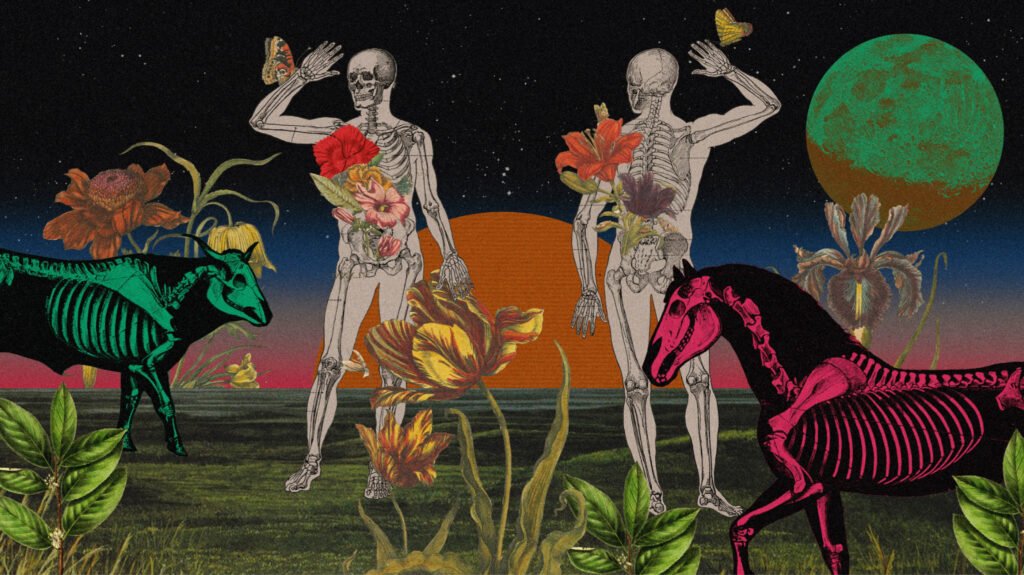

“Thank you, thank you,” replies Tiu. They sip from a cup, head bowed and eyes shaded. The ever-ebullient, trans non-binary visual artist, designer, and co-founder and director of Bad Student Risograph Art Press & Design Studio, who hardly ever is at a loss for words, takes a moment. “I’m trying hard not to cry because I’m in the mall,” Tiu continues, voice breaking a bit. “I’m so happy because I was able to showcase Filipino music—all these artists are my friends. That’s what pushed me, too, to submit. If the jurors would just listen to these albums, these artists, if my work could be a vehicle for them to expand the music they listen to? Whoo!”
Tiu shifts in their seat, voice picking up: “Wow, to have my work judged by Dan Matutina! Do you know how legendary you are at UP Fine Arts? I’m so glad you didn’t judge my thesis—I would have been too nervous to speak!”



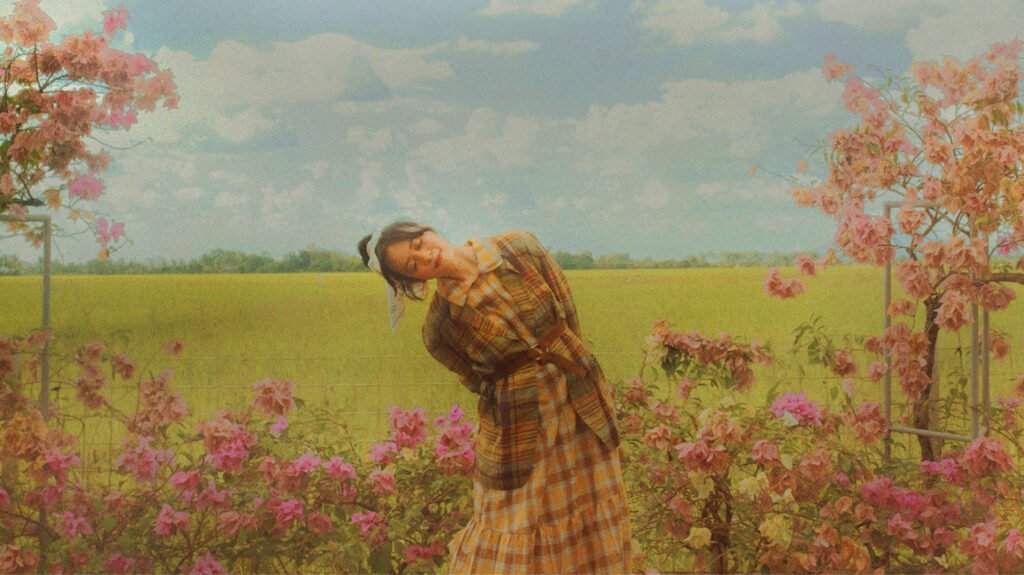
Ten years ago, Matutina would have winced at such adulation, but since his Young Guns win and the acclaim his work has garnered for its distinctive geometric style and exquisite textured craftsmanship, the graphic designer, illustrator, and founding partner of Plus63 Design Studio and the design collective, Hydra Design Group, has learned to accept compliments.
“I’m not hypercritical. That’s a misconception,” he objects, then commends Tiu a second time: “Sobra akong natuwa sa work mo, sobrang angas.” [“I super loved your work. It was super cool.”]
Tiu gets hyper again, peppering Matutina with questions and observations and sharing stories and dreams. They recall an early dream come true:
“I remember when we were in college, we would go to Camille’s house, my girlfriend. One day, she gave us a piece of paper. Camilla is older than me by two years—Ate Camille ko siya noon—she told us, “Draw our dream studio.” So Dyam and I, as young spirits, drew this house with a gallery and library on the first floor, our bedrooms on the second floor, and the print studio on the third. It was just a kid’s dream, na kung magawa natin to, wow. As we progressed in life and in our friendship, we kept that dream and treasured it; na these are our authentic selves as friends who aspire to remain together as friends. So last year, when we transferred to our studio in Cainta, it was surreal. Like, holy shit, we drew this. We drew this! We got proof; we drew our dream! And as that realization sank in, it was quickly followed by another: Ano pa yung kayang i-drawing ng iba kung mayroon lang silang kasama na naniniwala din?”[What dreams might others dare to draw if they only had friends who believed in them as much?]
The convo lasts two hours. In the end, Tiu asks the meister, mentor, and MVP whether he’d consider playing with them in the sandbox Bad Student built.
His answer sounds like another one of Tiu’s dreams is coming true.
The conversation below was recorded on Zoom, spilled over to email, and condensed for publication.


Pau Tiu: Dan! Yesterday was the deadline for Young Guns. Dude! The deadline was 11:59 PM Pacific time. I submitted it around 10:00 PM!
Dan Matutina: So, you made it!
Tiu: Yeah, I made it! That’s why I asked to set this interview later—I was expecting I’d be down the wire because I submitted two entries—one for me, Pau Tiu, and another for Bad Student. I have this fantasy that maybe both Bad Student and I can win. Is that possible, or would they count as one?
Matutina: The rule is if you’ve already won, you can’t win again. But there is a possibility. ‘Cause when the jury looks at the work, they don’t know who the entrant is. So when the entry has won, the identity is revealed, and that’s when the club decides. And since Bad Student involves other people, maybe….
Tiu: Yeah, in my mind, they’re different entities. It’s a different practice. For my practice, I submitted what I did for music design, and it’s a whole universe different from Bad Student. Ang wild nun if we both win!
Matutina: [Smiles]



Tiu: I guess I did a very Bad Student thing, submitting two papers, haha! My dad said something super nice yesterday while I was working on my submission. He said, “Anak, pagnagbuhos ang biyaya, mabuti na kung dalawa yung timba na dala mo.” [He said, “Child, when blessings pour, it’s better to be ready with two buckets than one.”]
Yes, Dad! Ang ganda ng energy niyo! But if only one can win, then I’d rather have it be Bad Student because I already won Colorful—that alone is the validation I needed. Wow. So, I want to ask you, Dan, what the POV is from the jury side. How was your experience judging Colorful?
Matutina: Colorful is slightly different from other competitions I’ve judged because the entrant’s story is factored in the final judgment. At the bare minimum, the work should be solid, diba? Judging is like a numbers game at first. After the numbers portion of the judging, we discuss and debate who should win. All the jurors in Colorful look for POC [persons of color]. But there were so many excellent submissions, so the entrant’s story is one of the things that make a finalist stand out from the rest.
Pau Tiu’s message to Colorful jurors
One thing I could improve from my side is—cause the thing about awards shows is, decisions are often influenced by the ones with the loudest voice, to be honest. Kung sino yung sumisigaw na judge na sino yung gusto niya i-push. So it is a big factor, talaga. And I think that’s a disadvantage for Asians na mahinhin, who aren’t as assertive. Not so much the Asian Americans or the Asian Europeans; they’re more assertive than Asian Asians.
I do speak up, not forcefully naman, but I can be insistent. But to be honest, when I know the entrant, I have second thoughts about pushing for them because the point of view looks super biased. (Well, actually, I know everyone who submitted from the Philippines.) But fortunately, there was another juror who pushed for you. This juror said they were partial to non-American and non-European entries winning because most Young Guns, Art Directors Club, and One Club for Creativity winners are from New York, the US, and Europe. That’s when I shared what it’s like being a designer, creative director, and illustrator in countries like the Philippines. The struggles of the practice are different. Of course, we can’t generalize, but to attain New York’s level of practice here in the Philippines? The hurdles to overcome are just so much more challenging. That’s what I added to the discussion.
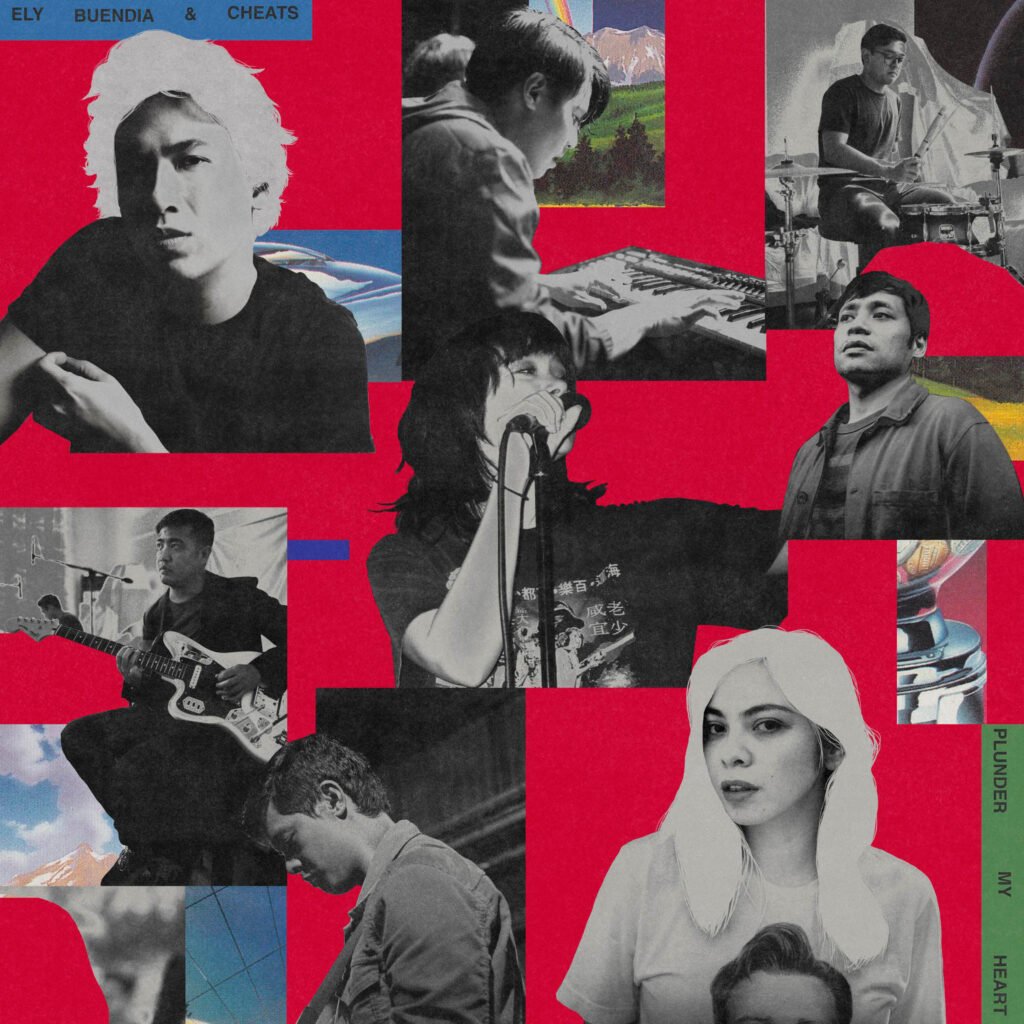



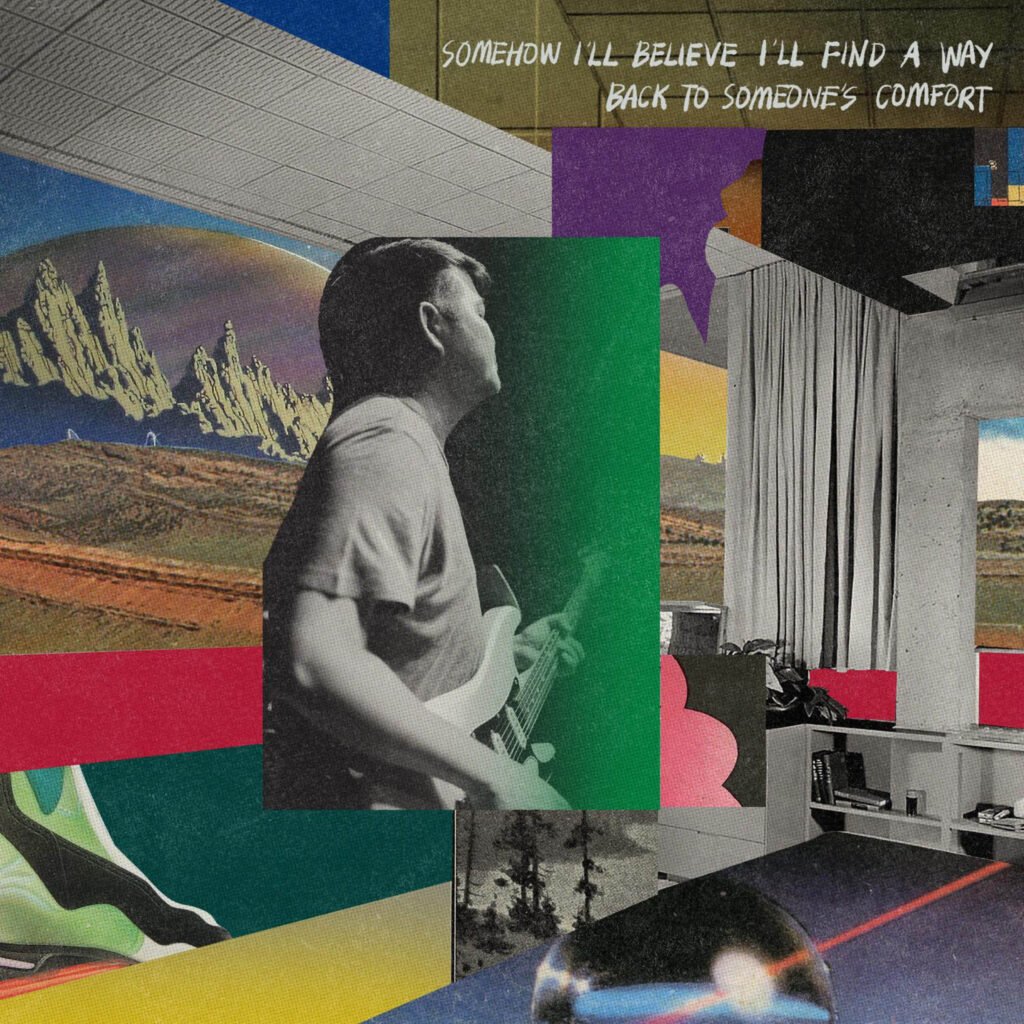
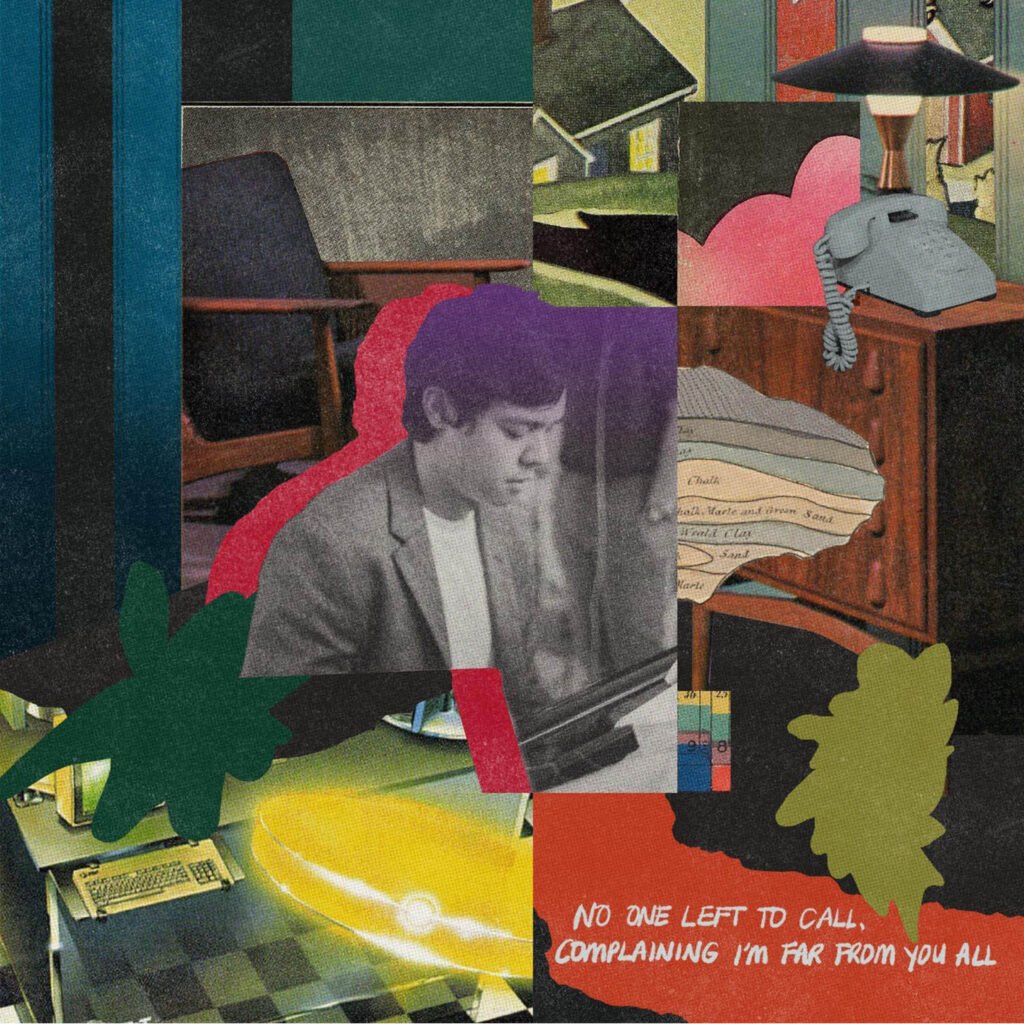


Tiu: I just want to thank you, Dan, for opening the door and keeping the door open for young designers. I wouldn’t have known about the competition if you hadn’t posted about it and constantly pushed us young artists to widen our horizons, so thank you. Yeah, I guess Pinoys are kinda mahinhin, or we don’t assert ourselves. But, dude, you opened the door and kept it open for, like, how many years? So, thank you, thank you! I want to know why you do it.
Matutina: I won’t say I see that as my job or responsibility, but that’s something I’ve personally grappled with ever since. Parang, the question for me has always been: Can we compete when you’re a designer or illustrator based outside the world’s design capitals? Because there are inherent advantages when you’re in New York, in LA, or places where people appreciate creativity. I’m not saying it’s easier, but parang, you can imagine a future in design, whereas growing up in the Philippines, you can’t quite imagine a future as a creative person.
Honestly, before, I didn’t want to shoulder that “responsibility,” but I guess the turning point was when Mind Flyer, an illustrator friend, spoke to me in Singapore. I was there for a talk and was on an early flight home the next day. He insisted on seeing me though it was kind of late. He came to my hotel and then we went to Brotzeit to talk. Pinipilit niya ako talaga na he wanted me to embrace being, for lack of a better term, an influencer—the thought of which, to be honest, makes me wanna vomit. Sukang-suka ako diyan. I never liked the idea of being a creative person slash celebrity. I have no problem when other people do it. But he said I needed to do it so that other designers or aspiring creatives could imagine a career in design. He didn’t have concrete suggestions for what I should do but just be out there, be acknowledged, be talked about, and somehow get into the mainstream, so others could be too. Tumatak naman siya sa akin. [What he said did impact me.] So, what you said about opening doors, that’s kind of the reason I do things I personally don’t want to. And that’s how I gauge things now. Like, if I do this thing, will it help parents encourage their kids to pursue a creative career?
Lovaganza 2015, illustrated by Dan Matutina, directed by Colin Hesterly, and animated by Jordan Scott and Colin Hesterly. “Lovaganza is a beautiful worldwide event built upon the ideas of Unity, Peace, and Abundance. A celebration of the world of tomorrow and a future filled with hope.” – Dan Matutina
Tiu: Dan. Grabe. Kinikilabutan ako! I got goosebumps! Quick story—I woke up seven AM, saw the email from Young Guns, and saw the word “winner.” I was groggy, I couldn’t comprehend everything, but I saw in bold letters “Congratulations” and “winner.” I called my parents, they came to the studio, hugged my mom, and of course, we cried. It was a moment. When my mom got back her composure, she said, “Anak, naiiyak ako. Grabe ang pagasa at liwanag sa mga bata na humahawak ng ballpen at pencil at Crayola ngayon.” [“Child, I’m crying. What incredible hope and light this is for every kid holding a ballpen, pencil, and crayon.”]
Tumatak yun sa akin. [That hit me.] I hadn’t thought of that. I joined Colorful because I wanted the grant and the cash prize. I wanted to go to SVA, not just to study but to be with my girlfriend. What my mom said was such a core moment for me that when I was preparing the two portfolios for Young Guns, that’s all I could think of—the people who opened doors for me to dream and hope and be able to do the same for others. If I could, I wouldn’t just open doors but also blow open the windows, the roof—everything!
I think that person who spoke to you shares the same spirit as my mom. Now I realize the importance of representation—just to see someone living a fantasy you had as a kid, someone actually doing it in real life. You made me think, “Dan did it! Maybe I can do it too.”
You also made me ask, “How did Dan do it?” And so, for a sharp segue, haha, ang lupet makita pag nagda-drive kame ng gawa mo sa billboard. Wow. Surreal, surreal ‘yon. I was driving along C5 on my way home to Cainta and saw the billboard. Maya. It was pure typography, no celebrity, walang kung anu-anong echos diyan, just the type itself. What the heck, yun ang maangas, sir! How did you do it? [It’s awesome seeing your work on billboards… It was pure typography, no celebrity, no bullshit, just the type itself. What the heck, that is freakin’ dope, sir!]
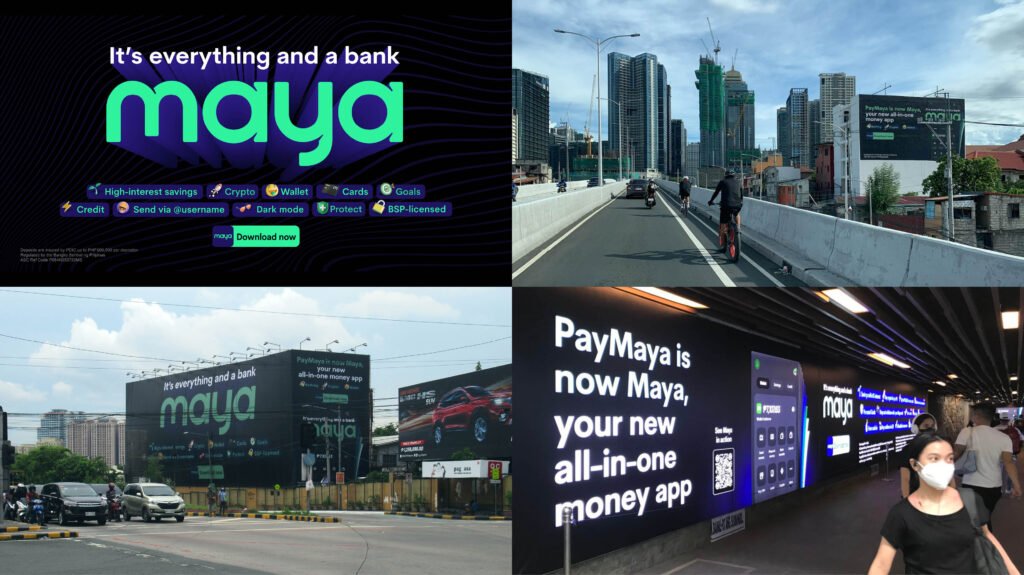

Matutina: Thank you. I think people give me too much credit. Obviously, you can say the lead designer impacts the work, but the other big factor is the people you collaborate with being on the same wavelength. The Chief Marketing Officer, Pepe Torres, contacted me before he even joined PayMaya. And at first, it was just the two of us talking. Then it led to discussions among my team and the Maya team about the rebranding from PayMaya to Maya, the new brand identity, how things should look, doing research, and deciding on the scope of work. Jo Malinis was already on her way out of the Plus63, but she developed the typeface for us before she left. That was her last project with us.
One of the things that made this project different was the level of trust and collaboration with the client. Most of the time, when we present our decks to clients, the concept is ninety percent done—buong-buo na siya. But in Maya’s case, both sides were comfortable working with each other, so I was present during the research Maya conducted, and they were with us in the brainstorming, the whole thinking process, sila Pepe Torres, Apol Sta. Maria, and other members of the Maya creative team, seeing the direction we wanted to pursue and why we wanted to do it that way. We’d show them rough sketches, then refine them on computer. It was ideal. While we were doing design development, the Maya team was solidifying and finalizing ideas, the values, and the why of the brand.
But my role as a consultant, aside from designing the whole thing, was to put people together, which I enjoyed. It started with the Maya team and us just talking about other creative people we’d love to work with, and then we said, let’s do exactly that. So, it took off with the identity we designed and grew from there. I said it would be great if the creatives we work with had free rein to translate the brand and visualize its different aspects, and client was wholly on board with that. So, Acid House, the director for the music video, Joel Limchoc, and even the in-house creative team had that freedom. That’s what I appreciated most about working with Maya. We were all aligned with the brand identity and, at the same time, were given creative freedom.


Tiu: In my head, Maya is a whole big corporate deal, and pag ganitong mga big projects, I don’t know how that works! So, it’s nice to hear how you attacked the project, not as a corporate thing, but still like working with friends, with people you respect. BUT, it is a big deal! ‘Cause I’m like, paano ginawa to ni Dan? How? Are you into finance? Was this like a dream project for you?
Matutina: Actually, I enjoy working on projects na wala akong alam, to be honest. One, when you’re a creative person, sometimes parang nakakahon ka—you get boxed in. You do this, this, and that. That’s not necessarily bad because it could mean you know your limitations and interests. But for me, matanda na ako, I’ve been in the creative industry so long; I really enjoy projects of an unfamiliar landscape. I like the idea of absorbing new things. I’m always hungry for knowledge all the time. So, this is the world of finance, and I want to learn about it. But it’s not all that unfamiliar because we do bank transactions, diba, and I use the apps.
Matutina: We may be creative people, but our worlds overlap with theirs—you need to pay for stuff, collect fees, and do other money-related stuff. I wanted to do it because I’d be learning a lot. And, as a creative, just like you, we all have something to prove. I wanted to show no matter how big the project and scope, it could be done even by a small studio. It’s the same theme as yours—can we compete with the rest of the world? Yes. That’s what you and I both want to prove. But one of the main differences about Maya was not just the rebrand we did but the whole campaign. They were…subversive. Imagine launching the new logo through a music video without saying a thing?
Tiu: Which music video?
Matutina: Shanti Dope’s Maya music video.
Tiu: Whoah! Ang angas! [That’s dope!]
Matutina: It was months after the music video came out that PayMaya rebranded to Maya, and we launched the new identity and logo. As in, ganun siya ka-subversive. So, the video came out on Universal Records’ YouTube. The new logo was there but we never said anything. The joke was, as Miguel de Dios, Maya’s head of copy said, the rebrand was hiding in plain sight.
Tiu: Ang ANGAS! From the rap to the video treatment and concept and even the artworks used throughout the music video, grabe, SOBRANG SOLID. I hope more campaigns and releases use music videos as a creative medium to express ideas and concepts. And also, I love how super strong the Filipino symbolisms, themes, and identity are in the music video. Nakakainspire at nakakataba ng puso mapanood. [So inspiring and heart-warming to watch.] Wow, actually, Maya is being true to its name. Being that agile, hiding in plain sight, you don’t notice it’s there tas bigla na lang mayroong lilipad [until it suddenly flies off]. I’m mind-blown you released it in a music video. Now you’re speaking my language, deym!
Matutina: To add to that, Pau, one thing I learned and witnessed in studios and designer friends, especially from other countries, hindi lang sa Pinas, is even if they’re small—by that, I mean the number of people—working on a super big project can be done. But obviously, kailangan mong tibayin ang loob mo [you gotta gird your loins] because the big agencies have the whole contingent of AEs, accounts, sales, marketing, and creatives. At Plus63, that’s all me. I’m the front man who talks to the clients, I’m the one talking to the other creatives working on the project, I’m the one talking to everyone. And that’s what I like about the process because I learn so much. Personally, I find myself constantly looking for those moments of feeling nervous and edgy. You’ll experience this as you get older, Pau. You get to a stage where you know what you’re doing and are comfortable doing it. But I miss that feeling of being nervous about work!
Tiu: Creative high!
Matutina: Like, “Oh, shit, will they like it? Are they gonna disapprove this? Panget ba gawa ko?” I had this presentation before to the head of a super big company. Super big, ha, a conglomerate. So, my presentation was fine, but we were also supposed to present the design of a space, and the one supposed to present it suddenly couldn’t make it! Because we had only that short appointment, I had to present the interiors! To be honest, I was familiar with the design because the designer and I talked about it throughout our collaboration. But it’s still a different feeling when presenting something you’re not an expert on. So there I was, explaining the interiors, thinking, putangina, oh shit—as in one of the worst feelings and obviously one of the best feelings as well—talking about the interiors, “O, here’s the overall concept, okay, and here’s the design, and this is what it feels like….”
Tiu: [Laughing] MVP moment!
Matutina:…and shit, what nga do they call this area of the space?
Tiu: [Laughing] Impromptu!
Matutina: And then the boss said, “Okay na yan! Game. Approved.” Whew! Ah! Shit, grabe. All the while, I was thinking, tangina, if this doesn’t get approved, tangina!!!
Tiu: [Still laughing] What the—bakit kasi ako, hindi ko naman ‘to sakop! [Why me? This isn’t part of my scope!]
Matutina: Exactly. So, anyway, the learning there is, siempre, we gotta be involved in all aspects of design work in a project. Of course, I’m involved but I don’t yet get all the technicalities of it, the terminology. But the other part of it was I was super high while presenting! Nagpe-present ka na kinakabahan ka—yun yung sinasabi ko na rason, apart from gusto kong matuto sa maraming bagay, gusto kong kabahan sa trabaho, na hindi ako comfortable dahil matagal ko nang ginagawa ‘to. Ganun. [That feeling of nervousness while presenting, that’s what I was saying is one of the reasons why, apart from wanting to learn, I like working on things I don’t know. I like that feeling of nerves, of not feeling comfortable because I’ve been doing this for so long.]
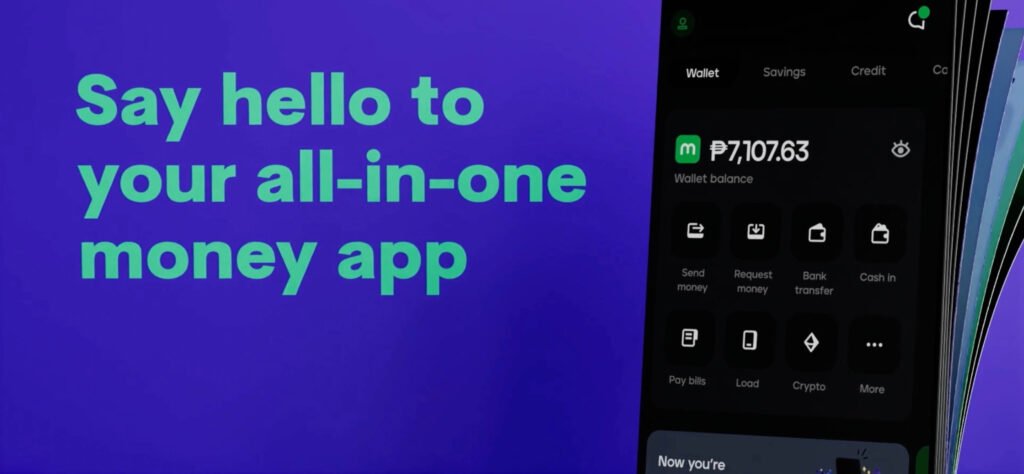

Tiu: Ganda. Nice. That, I guess, is what’s awesome about being an independent design studio—I don’t want to say “small” because, dude, you are big time. Insult na tawagin kang small! Independent studios and collectives have such a strong DIY spirit; it doesn’t matter what position you find yourself in, you find a way—kaya mong gawan ng paraan—yun yung thrill, diba?
‘Cause, that’s where we get our thrills—our motto is “DIY or die.” Like, gawan mo ng paraan! And I think because that’s your energy or your spirit, and Plus63’s, and everyone who handled this Maya rebranding, I get now why Maya “is everything.” Like, yun ka, e. Diba? That’s you. The things we design are an extension of ourselves; we cannot design outside our own perspective.
So, to be that confident and have that copy of “Maya is everything and a bank,” that is true to you. That’s why I feel the authenticity of the rebranding. Dun palang sa 7107 point 63, alam ko na agad na si Dan Matutina yung isang miembro na nagshoo-shoot ng bola. [Just seeing 7101.63 in the graphic, I immediately know Dan Matutina is one of the team members shooting that ball.]
So, good job to the team. Good job to everyone who did it. Ang angas. This is the kind of stuff you read about in books—top of mind is Paula Scher, who created that iconic logo for City Bank & Travelers or Citigroup. What you guys did, I feel, will be discussed in schools in the Philippines, so congrats. Ang galing!
Matutina: Sana nga. I hope so.
Tiu: I wanna ask about your NASA triptych and the Shibuya Sky project. Paano mo sila naging client? I’m such a huge fan of NASA and what they’re doing. Sobrang, whoa, when I saw that, I was starstruck. Legit ba to? Even just seeing the NASA logo, whoa! How did you approach the project?


Matutina: The one for NASA was part of the show at the Gallery Nucleus. It was a tribute show for NASA’s 60th Anniversary. It was a collaboration between the gallery and NASA/JPL (Jet Propulsion Laboratory). The brief was to create a series of artworks that feature NASA’s various missions, accomplishments, and historical figures. Since I’m a designer/illustrator, I opted for Riso posters. I had a lot to work with. I looked at the NASA website for references and went for the notable achievements of the JPL na personally bet ko, hehe—the Mariner 2’s Flyby, the Mars Pathfinder, and Cassini’s Probe on Saturn’s rings.
Tiu: And you asked me to print it for you on Riso. Dude, dumaan yung art mo sa akin! It was a good challenge for me to print in full color because when the paper gets wet, it jams the printer, so I had to take my time and be extra careful. Why’d you choose to use Riso?
Matutina: Honestly, I just wanted it to look space-ish. Hahaha… I didn’t want it to look perfect. Excited ako makita ano magiging itsura niya—yung texture, unevenness of the print, uncertainty ng results, etc. and masaya rin kase automatic may texture na siya… even if I didn’t know what the final look would be,hahaha.
Tiu: Why triptych?
Matutina: Since the print had to be shipped, size would be a limiting factor. There was also the paper size limitation to the Riso (A3), but I wanted the work to have a visual impact at the exhibit. So I thought, best to make it into a triptych. So nagwork din siya kase I used the planets Venus, Mars, and Saturn as the base for each panel.
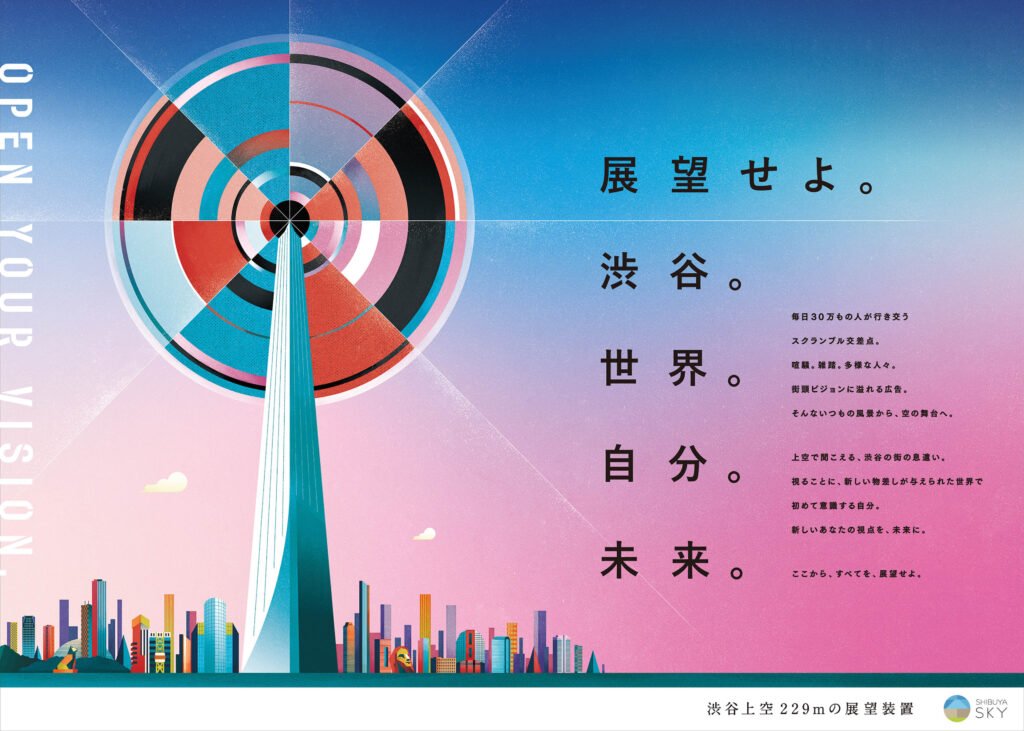

Illustrations for the launch of Shibuya Sky observation deck by Dan Matutina, 2019
Matutina: Shibuya Sky naman was via Rhizomatiks and Kitchen Sink. I think they saw my work via Visiontrack, and they liked it. (I hope, haha!) They thought it was a perfect fit for the feel they were going for. The brief was to create the main visual for the whole campaign. So I made one main illustration with the building and an illustration of Hachiko (the dog). They used the artworks on the promotional materials, including the souvenirs at Shibuya Sky. Sobrang cool and sosh niyang destination!
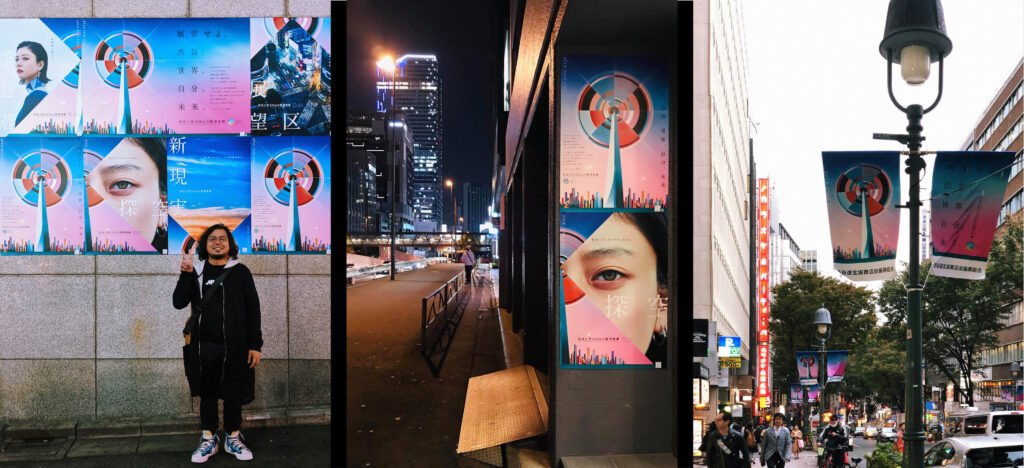

Tiu: What was your design process for NASA and Shibuya Sky? How were they different?
Matutina: NASA was a bit “easier” because the gallery and NASA didn’t have to check the work. There were a few guidelines that were sent to us. I guess they trusted the participating artists/illustrators in the show? For Shibuya Sky, from the beginning, the visual was clear to us. So, my sketch was actually already a render. Hahaha. Medyo final-ish, just without the colors.


Tiu: How long did it take to do them?
Matutina: Honestly, mabilis lang. Hahaha. For Shibuya Sky, I think total work hours… maybe a week? NASA was fast. Two to three days?
I want to ask you about Bad Student. I just love the whole idea of it. And I like your name, Bad Student; it’s got that anti-hero vibe. You already told me before why it’s called Bad Student, but there’s a layer to it I really appreciate. Correct me if I’m wrong, but I see it as support for the creative industry. You’ve shown it’s possible to build a successful Riso studio—but beyond that, Bad Student has a residency for younger designers to publish their work. And that’s super necessary because publishing as an industry is, you know, people say it’s dead. You don’t see a lot of work being published, and the fact that Bad Student is still doing it in this economy and at this time is an incredible boost for creatives; it’s tremendous goodwill to everyone in the industry. And then, you and Dyam have your own practices. Dyam has her art, and you have your own creative practice. So I’m super interested in how you balance these things out—keep Bad Student and your own personal practices going while supporting other creatives.
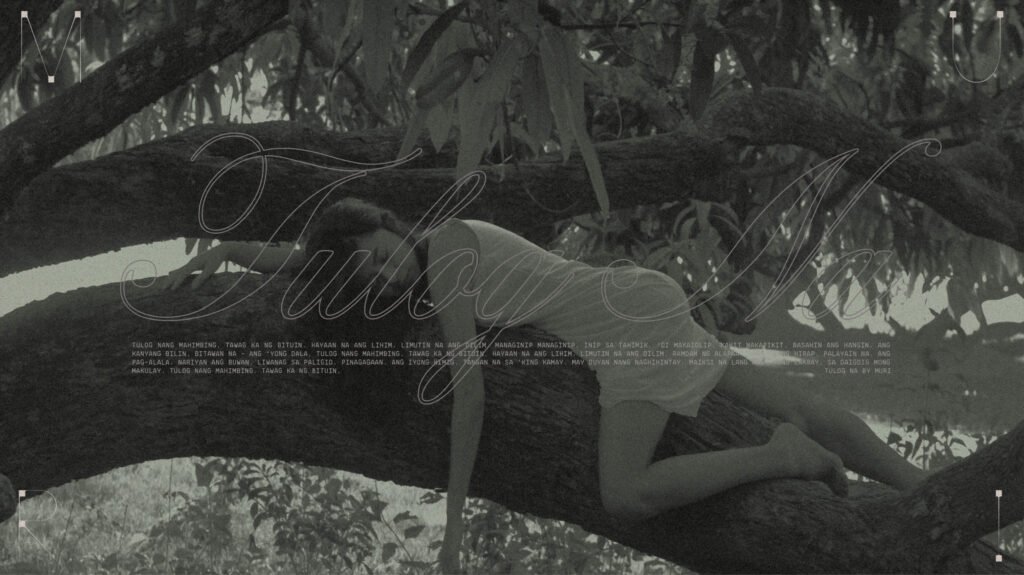


Tiu: Nice you see it that way. I don’t want to say that Bad Student is just a side quest for us, but our main quest talaga is friendship. Haha! Ang fluff ng answer na to. But for the support we extend to the community to be true and authentic, and for us to sustain it, our support for one another has got to be solid. Dyam and I and Gino and Camille are family; we’ve been friends for almost a decade. What we do for the community is just an abundance of how we support each other.
So, in a way, when we publish works of other people or support artists, it’s us believing in their dreams and aligning their dreams with ours too. And our dream was simple—to create and be with our friends, create and be with our friends, and create. So, what we do for the community is just a reflection of what we did for each other and with each other, which allowed us to explore our identities without fear of losing Bad Student.
Bad Student gave us the platform to keep doing what we’re doing and extend that to others—and that’s the bonus. So, I’m happy when I see Dyam exhibiting her work, doing her own thing, being true to herself, and exploring her craft. Because that’s what I saw in her when we met in college. So, as a friend, I don’t want to take that away from her and say, “O! We are Bad Student, that’s our identity, and that’s the priority.” Sometimes we like to joke that Bad Student is just a front, a thing to present to the adult world for them to take us seriously, but it’s actually just two kids playing. I own a golden retriever, and Dyam owns, I don’t know what breed Cheetos is, but a cat. I own a dog. She owns a cat. And we see ourselves as two kids who shapeshift into a cat and a dog inside the house and create art because we were encouraged to play and make art.
Sounds insane to say that because it doesn’t sound real, but that is the most real answer I can give. And being aware of the magic we have created through friendship and art? Parang hindi makatao o hindi makatarungan kung hindi namin i-she-share sa mundo. [It would be inhuman or unfair not to share it with the rest of the world.] So, it’s effortless when someone knocks on our door, whether it’s an artist or a friend asking for help. What we do is just listen to them tell us their dreams and take pride na wow, Bad Student plays a part in your dream? Thank you! So that’s the spirit.
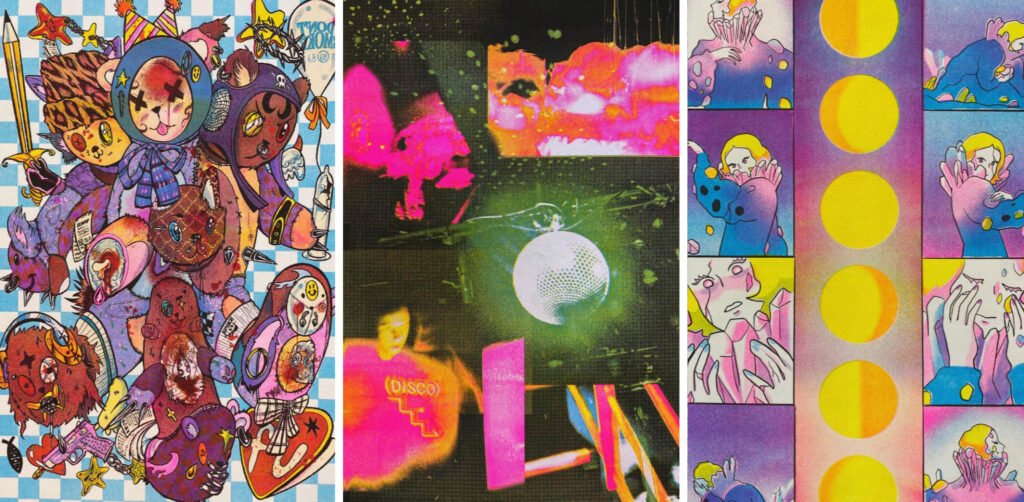
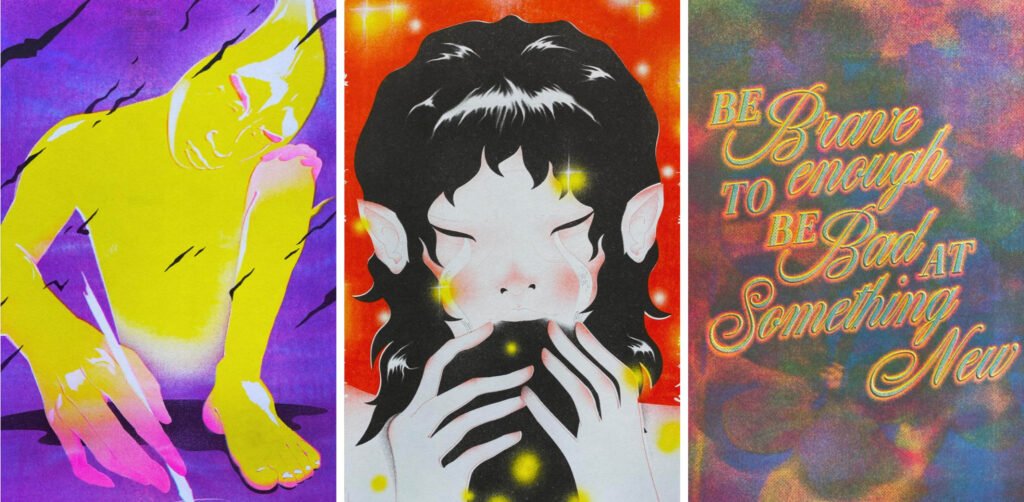


Tiu: We are also this way because of what you passed on to us. Studyante niyo kami. You were our mentors. We saw your portfolio, saw your amazing body of work, and studied it. There’s that super strong DIY spirit of artists who came ahead of us, and nadun yung gift na yun, sinalo namin ng buong-buo [and that was a gift we fully embraced.] Now, what we’re passing on to the new generation is DIY this shit. But Dyam and I morphed it from “do it yourself” to “do it together.” So, DIT na pala, haha!We know how to do it ourselves, but it’s more fun to do it together, and we’ve been doing it together for ten years now. And I think at the heart of it is very Filipino, which is bayanihan. Bad Student’s goodwill is really bayanihan. Bubuhatin ko yung pangarap mo habang ikaw binubuhat mo pangarap ko. Magkasabay tayong binubuhat ang pangarap ng isa’t isa. [I carry your dream while you carry mine. Together we lift up each other’s dreams.]
Matutina: That’s a great foundation for a residency.
Tiu: Above all, it’s been besties before business. It isn’t just a residency; we’re like an adoption center! We’re like Pinoy Big Brother roommates, except no one gets evicted or voluntarily exits. Now that we have a much larger studio with extra rooms, there’s a place for artists dreaming the same dreams with us. Last year, our parents got more involved in our arts and crafts, so my mom, we call her the Bad Student principal. She gives everyone who does residency at Bad Student the same love she gave me. I think that’s the answer. You just need someone, a parent or someone older to tell you, “You can do it.” And Bad Student is morphing into that.
I want to ask you how you feel about people leaving Plus63. I see how supportive your studio is to employees who ‘graduate’ and start their practices. But have you ever had an employee you regretted losing?


Matutina: I’m okay with them leaving. Actually, that’s one of the challenges for us in the studio—designers who don’t want to leave but should because it’s time to create their own path. Like Raxenne Maniquiz and Jo Malinis, they’re independent now. But it was a challenge for them to go, I guess, because they were comfortable in Plus63. Jo was with us for almost ten years. Raxenne, six or seven years—it was her longest job ‘cause she would last about a year in others. Other companies want their employees to stay. But the way I look at studios, people should outgrow it. They must find their own path. Because they’re great at what they do. So why stay and work for me?
Tiu: You really are our reference. You gave us the opportunity to dream of running a design studio, and I think we’ve captured your core essence, like Hydra—everyone does their own thing, and then when we’re called to volt in or work together like the Avengers—that’s pretty much what Bad Student is. We call it “group work,” haha! When there’s a project that needs more than one pair of hands, we become Bad Student. Our top priority is that this is a safe space for each other to develop their craft. Ang saya niya! I can go to sleep knowing all the people in the house are there to support me. Whatever I do, they’ll be there at the opening. Whatever I do, they’re there to congratulate me. Whatever I do, palpak man o hindi, they’re there to catch me. We’re at that point that we know, deym, this is rare.
Matutina: Who’s in the Bad Student house now?
Tiu: Dyam. Gino, Gianne, me. And every morning, mom comes to water the plants and wash the plates we haven’t washed! It’s like a dorm for artists. Camille is flying home September, I think. She’s in and out of the house. It’s like Hydra, right? People of different professions, each with their own projects, then when it’s time to volt-in, we’re all there in the conference room.
Matutina: Yeah. There are similarities. We’re all friends, but I imagine you guys are much closer since you’ve been friends so long and live together. What’s next for you and Bad Student?
Tiu: What I want is to train under you. I just want to go to Hydra to be mentored, like, in the proper way of running a studio. ‘Cause we don’t have a project manager, and none of us know how to manage projects! So I really could use mentorship on the management side of things.
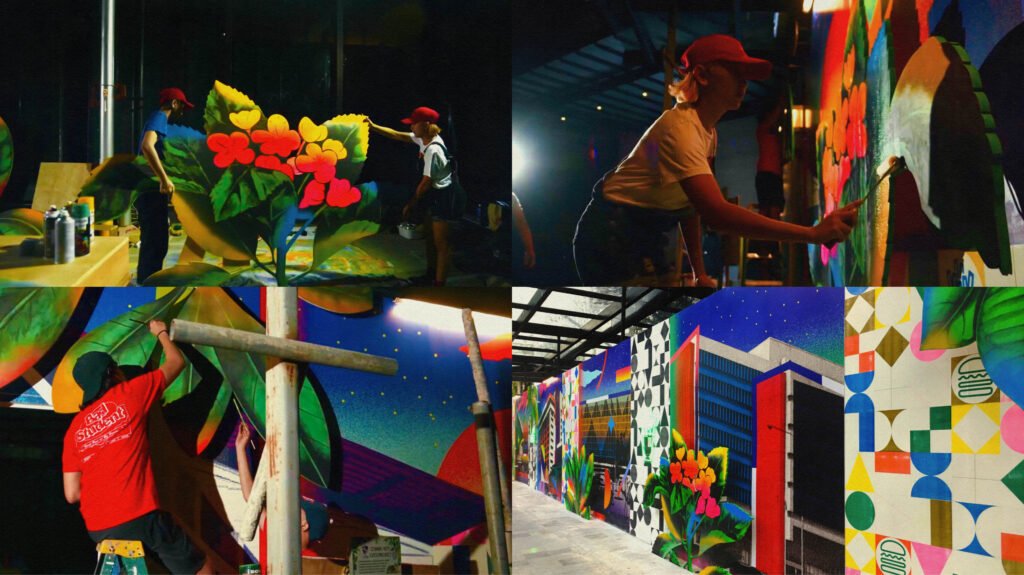

Tiu: We’re at the point in our friendship where Dyam and I can explore our individual crafts. We’re planning on doing art residencies. Dyam is gunning for an art residency in Japan. I’m gunning for an art residency in New York. We’re not worried about what’s going to happen to Bad Student. We believe it can exist without us being physically present.
In the next five years, I want to see Dyam exhibit her work in MoMA. Yeah, we’re dreaming big because when we were in FA, the dream was to have our own place to house the studio. So, what’s stopping us from drawing another dream? So, my dream for Dyam ever since is that she shows her colors to the world. ‘Cause, that’s what I saw in her in college and why I befriended her. Me, I still love printmaking, I’ve found the intersection of graphic design and printmaking, and we want to set up Bad Student New York soon, so I can finally be with my girlfriend.
How about you? Do you see yourself retiring?
Matutina: Honestly, I don’t see my design work ever ending. I don’t know, Pau, what your takeaway would be, but a long time ago, that was one of the things I tried to resolve for myself. Maybe this is something you’ll have to decide for yourself too, maybe not. Because for my generation, the expectation is that if you had the good fortune to study and work, you should become rich, buy a house, etc. I struggled with that. That might have been possible when I was young, at the time I was making that decision. I felt, yeah, I could do that. But then, I wouldn’t be doing what I truly wanted. So, I decided, okay, the path I want will not make me rich. Obviously, for someone to even debate this means you’re coming from a privileged position. I knew I’d be able to live comfortably, but sacrifices would have to be made. So that’s what I decided, and it proved very helpful for me to do good work. My priority as a creative person is to do good work.
When I made that decision, I also knew that design work would be a passion that would never end. I think of creative work as an endless run, like Temple Run [an endless running video game by Imagi Studios] if you think about it. People ask, is it a sprint? Is it a marathon? I think it’s neither. Like Temple Run, it’s endless. While running, you pick up things, earn points, and lose some. It’s up to you to decide whether to continue running or to end it. If you want to end, no problem, you stop, do something else, and then take up running again. I don’t know when I’m going to end. So endless runner is my metaphor for it.



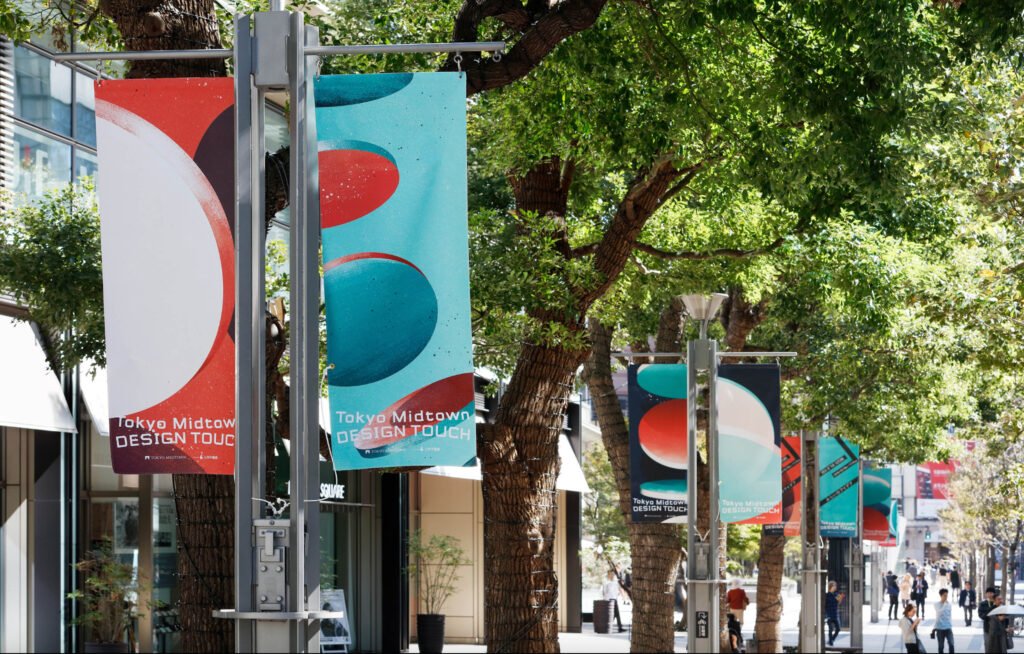
Matutina: And even now, I see creative work as something that applies to everything. And that’s what I love about it. Without being specific, I have friends starting their own businesses, and they ask me for my thoughts, not that they’re having anything designed, right, just as someone who can look at things and provide a different perspective, or maybe just as someone who can say something they can’t. So, yun, I can’t imagine ever retiring. Whatever avenue I find myself in won’t stop me from becoming creative.
That’s why I tell the young designers in the studio that nothing should stop them from doing whatever they want to learn or find out. Whether it’s Hydra or Plus63, and there’s something you want to try, I won’t stop you from doing it. Most companies won’t allow that. It may be a flawed setup, but I let designers in the studio take gigs on the side, okay lang na rumaket sila. They need that for personal development.
Tiu: Ang ganda ng ganung perspective. I can see a place there for Bad Student. Bad Student is a creative playground; it isn’t just a design studio or art press. We’ve transcended that—it’s a label that no longer resonates, but we keep it cause that’s what most people get. But if we’re talking about what it really is, it’s a creative playground that only works when there are people like you, mentors like you, artists like you, who encourage that kind of play and exploration. I’m just so happy that some of the birds that have flown from Plus63’s nest, like Rax and Jo, have found a playground in Bad Student.
Matutina: Pagtumatanda ka, umiiba rin yung laban. Yun yung isang thing na pinipilit ko si Jo and see Raxenne na pasukan. [When you get older, the fight changes—it’s an altogether different battleground. And that’s what I’ve been telling Jo and Raxenne they should be involved in.] It’s our design community interfacing with others in the different creative industries, policy, and legislation, which means dealing with politics and different agendas. Most people don’t care for that—I didn’t either, to be honest. But sometimes, it can’t be helped; people who want to change things for the better approach you for support. There’s so much potential to do good, even though it can be thankless work. But someone’s gotta do it. When you get older, you’ll experience that too.


Tiu: I really appreciate that you’re attending to that. To be honest, hindi ko siya iniintindi [I haven’t given such matters much thought], but I know it’s catching up with me, and I’ll have to understand those things soon. Thank you again for doing it. You lead the way, para mas ma-gets namin [so we can better understand it].
Dan, you’re a Lebron or Michael Jordan! Twenty years as a creative, and you’re still scoring and shooting slam dunks. It’s taken me time to build my confidence, and I’m getting myself ready to play with you guys. But before I play at the adult court, may I invite you to please play with us first at the Bad Student playground we built?
Matutina: G ako dyan. Game! •
The winners of Young Guns 20, the competition Pau Tiu and Bad Student joined, will be announced in November 2022.


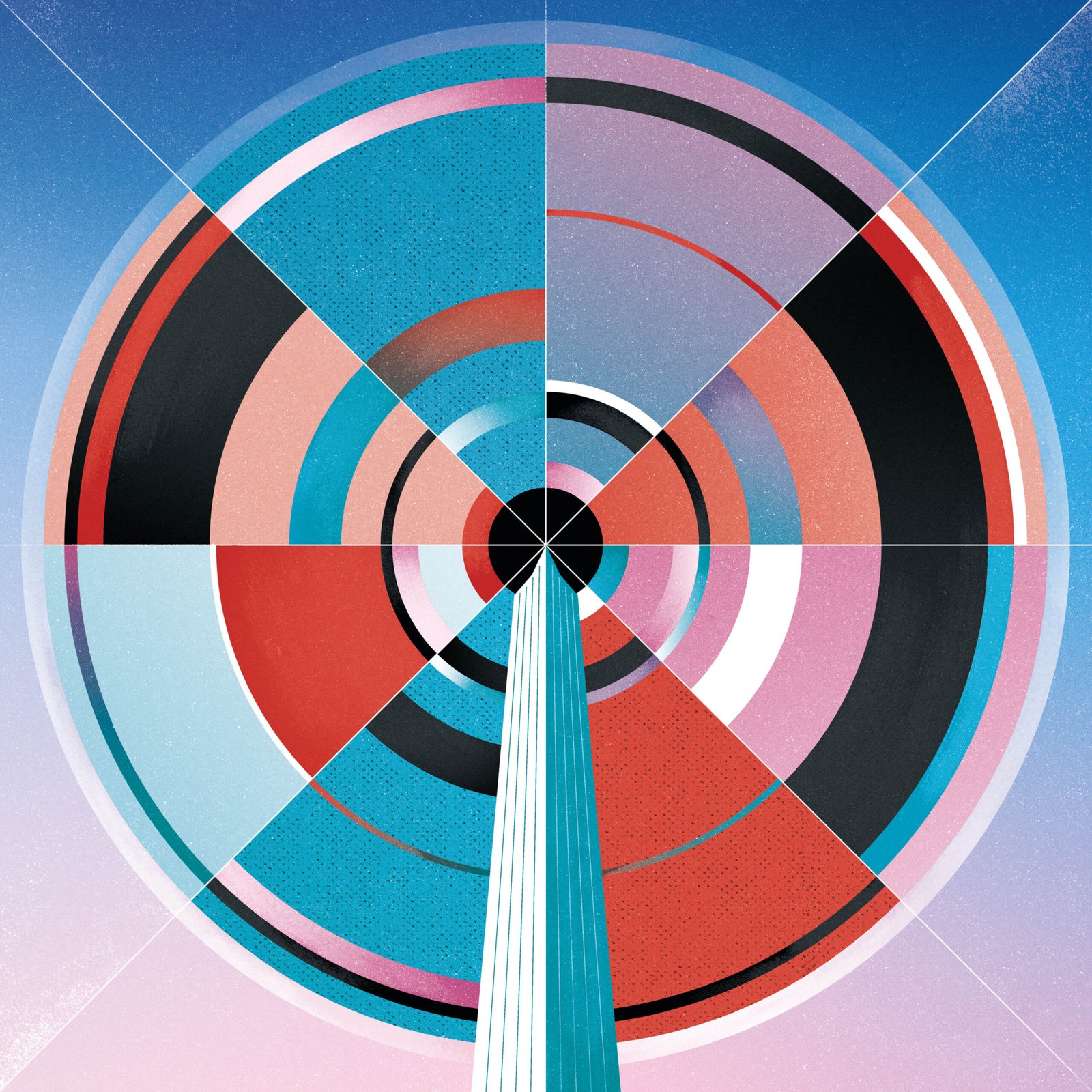
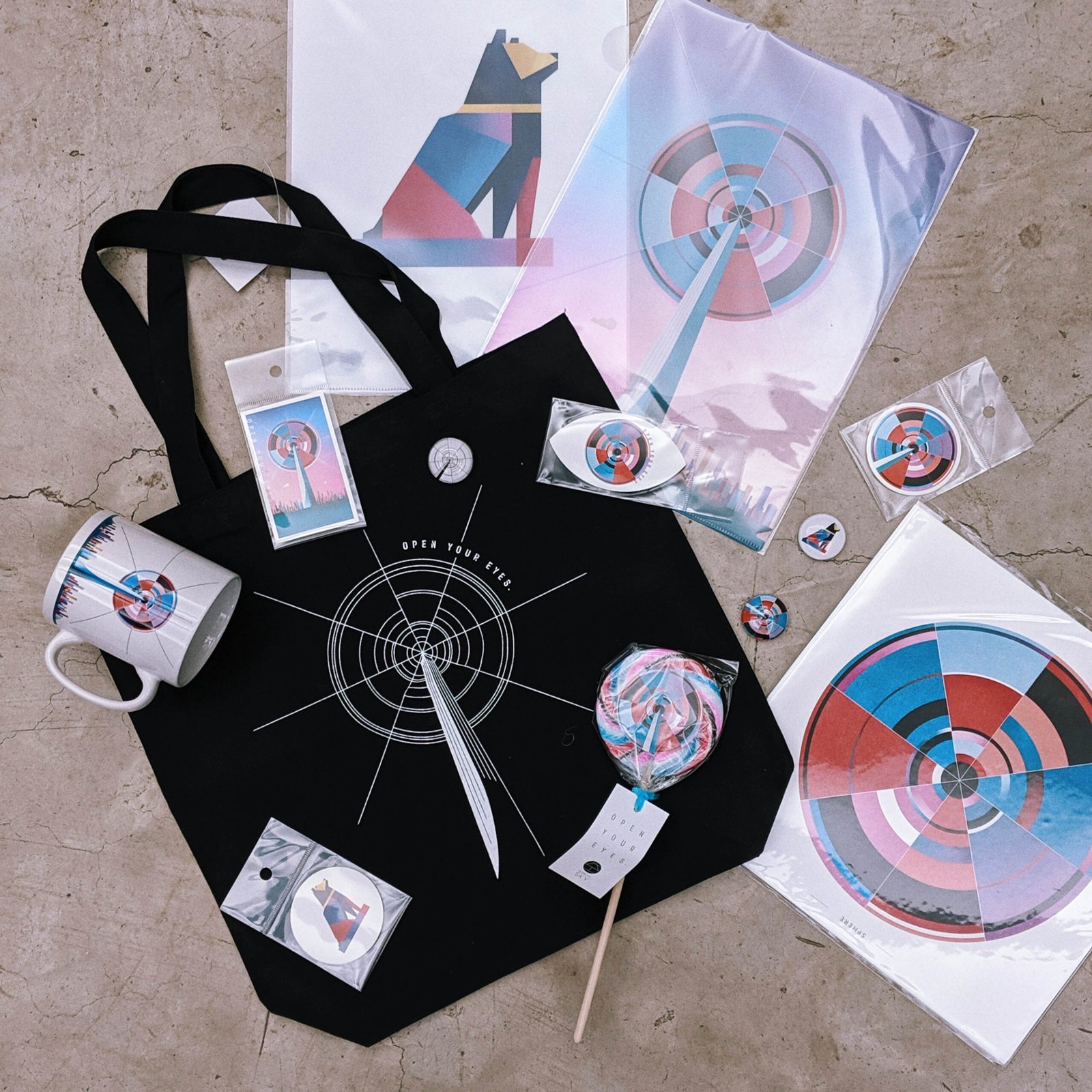



2 Responses